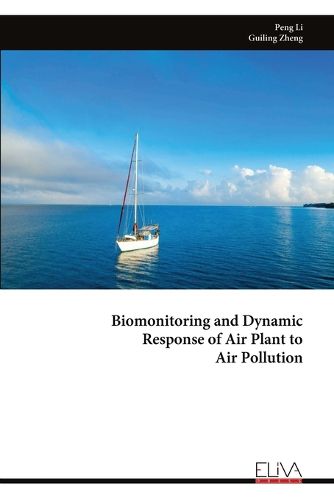Readings Newsletter
Become a Readings Member to make your shopping experience even easier.
Sign in or sign up for free!
You’re not far away from qualifying for FREE standard shipping within Australia
You’ve qualified for FREE standard shipping within Australia
The cart is loading…






This title is printed to order. This book may have been self-published. If so, we cannot guarantee the quality of the content. In the main most books will have gone through the editing process however some may not. We therefore suggest that you be aware of this before ordering this book. If in doubt check either the author or publisher’s details as we are unable to accept any returns unless they are faulty. Please contact us if you have any questions.
Air plant (Tillandsia spp.) is a kind of special plants that can grow in the air and does not need soil. It is originated from Central and South America and has been introduced and cultivated all over the world because of its unique ornamental value. As a special epiphytic group, the root function of air plant is degraded, and it's growth completely depends on the leaves to absorb water and nutrients from the air, so its leaf absorption capacity is strong.
The book contains a systematic study on the biomonitoring, purification and dynamic response of air plant to air pollutants. The results show that air plant is a broad spectrum plant to absorb atmospheric pollutants, including heavy metals (Hg, Cd, Pb etc.), formaldehyde, radon (Rn) and particulate matters (PM10, PM2.5 etc.). The specialized foliar trichomes densely covering Tillandsia leaves played a major role in the absorption of various pollutants. Moreover, air plant has a strong ability to resist air pollution damage, and has various unique avoidance or mitigation mechanisms in structure, physiology, gene and other aspects. Hormesis effect, in the framework of which a toxicant has a stimulating effect at low doses and a toxic effect at high doses, can commonly occur in this plant. Plant resistance genes and glutathione (GSH) may play an important role in the generation of hormesis.
$9.00 standard shipping within Australia
FREE standard shipping within Australia for orders over $100.00
Express & International shipping calculated at checkout
This title is printed to order. This book may have been self-published. If so, we cannot guarantee the quality of the content. In the main most books will have gone through the editing process however some may not. We therefore suggest that you be aware of this before ordering this book. If in doubt check either the author or publisher’s details as we are unable to accept any returns unless they are faulty. Please contact us if you have any questions.
Air plant (Tillandsia spp.) is a kind of special plants that can grow in the air and does not need soil. It is originated from Central and South America and has been introduced and cultivated all over the world because of its unique ornamental value. As a special epiphytic group, the root function of air plant is degraded, and it's growth completely depends on the leaves to absorb water and nutrients from the air, so its leaf absorption capacity is strong.
The book contains a systematic study on the biomonitoring, purification and dynamic response of air plant to air pollutants. The results show that air plant is a broad spectrum plant to absorb atmospheric pollutants, including heavy metals (Hg, Cd, Pb etc.), formaldehyde, radon (Rn) and particulate matters (PM10, PM2.5 etc.). The specialized foliar trichomes densely covering Tillandsia leaves played a major role in the absorption of various pollutants. Moreover, air plant has a strong ability to resist air pollution damage, and has various unique avoidance or mitigation mechanisms in structure, physiology, gene and other aspects. Hormesis effect, in the framework of which a toxicant has a stimulating effect at low doses and a toxic effect at high doses, can commonly occur in this plant. Plant resistance genes and glutathione (GSH) may play an important role in the generation of hormesis.